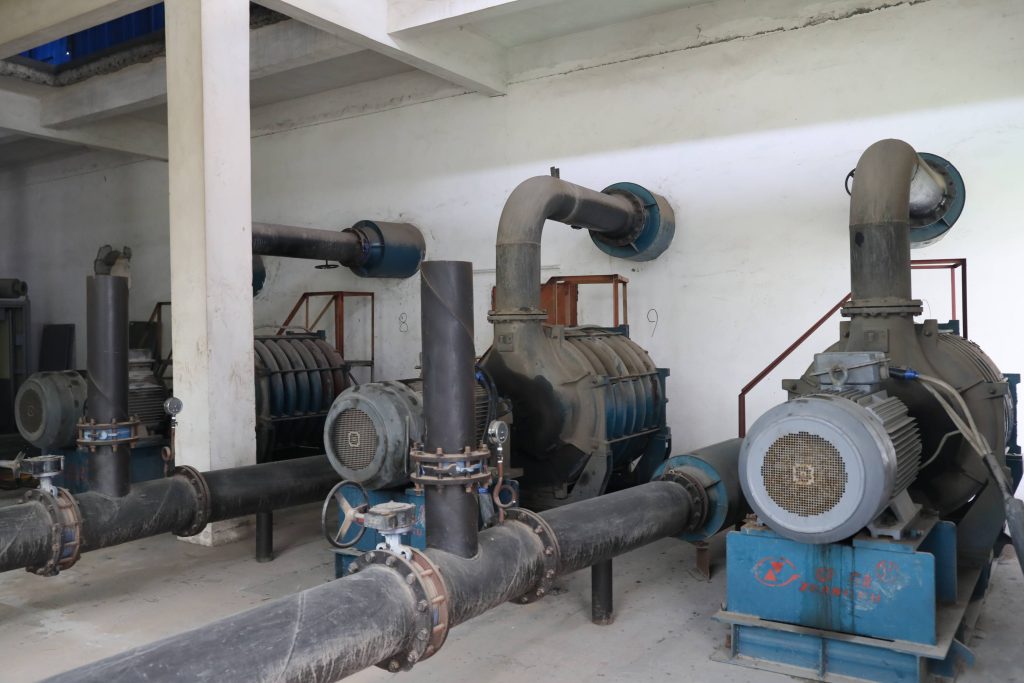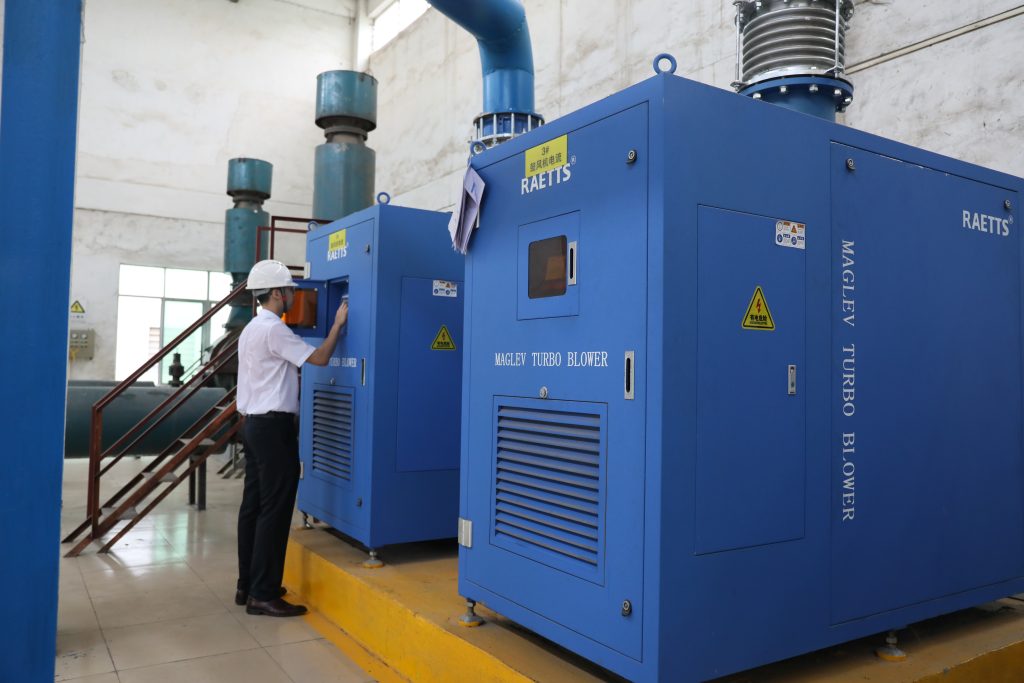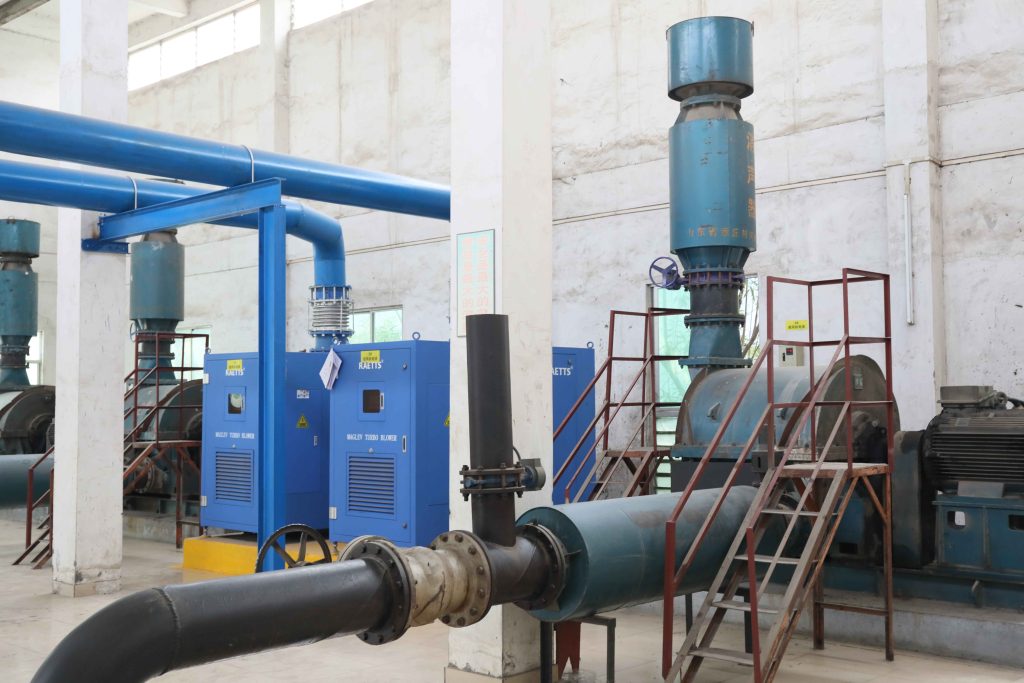Why Roots Blowers Cost 2–3× More Than Maglev Blowers in Wastewater Treatment
In wastewater treatment plants (WWTPs), aeration is the most energy-intensive process. Operators often assume that CAPEX is the main factor when choosing blowers, but the lifetime operational cost (OPEX) tells a very different story.
This article breaks down why traditional Roots blowers frequently end up with 2–3× higher OPEX than Maglev turbo blowers, based on real-world plant operations.
1. Electricity Costs: The Biggest Driver
Blowers operate 24/7, 365 days a year. Even a small difference in power draw significantly impacts energy bills.
-
Every 1 kW difference = 8,760 kWh/year.
-
Roots blowers are often oversized by 50–120 kW to ensure pressure stability and account for fluctuations.
-
At typical industrial electricity rates, this translates to tens of thousands of USD extra per year.
💡 Electricity alone can account for 70–85% of total OPEX, making it the primary factor in cost comparison.

2. Oversizing and Efficiency
Roots blowers are commonly oversized to guarantee performance under variable load, which leads to:
-
Higher energy consumption than required
-
Larger footprint and infrastructure demands
Maglev blowers, in contrast, use high-efficiency impellers and variable frequency drives (VFDs) to match actual process demand. This ensures optimal power use and stable aeration, avoiding unnecessary energy waste.
3. Maintenance Differences
Maintenance costs further widen the OPEX gap:
| Feature | Roots Blower | Maglev Blower |
|---|---|---|
| Annual Maintenance | ≈5% of equipment value | ≈0.5% of equipment value |
| Consumables | Oil, belts, gears, filters | Air filter only |
| Downtime Risk | Moderate to high | Very low |
Even though maintenance is smaller than electricity in absolute terms, over 10–20 years, the savings from minimal maintenance on Maglev blowers are substantial.

4. Hidden and Indirect Costs
Roots blowers often incur additional hidden costs that operators rarely budget for:
-
Unplanned downtime due to mechanical failures
-
Lubricant and spare part logistics
-
Noise mitigation (Roots: 110–120 dB vs Maglev: ~85 dB)
-
Building/room modifications for larger units
Accounting for these factors, the total lifetime OPEX of Roots blowers can easily reach 2–3× that of a comparable Maglev system.

5. Real-World Savings With Maglev
Wastewater treatment plants upgrading to Maglev blowers often see:
-
30–40% energy savings
-
Short payback period: 1–2 years
-
Longer service life, minimal maintenance, and lower noise
This demonstrates that Maglev blowers are not just a high-efficiency replacement — they are a strategic investment in sustainable wastewater management.
🌱 Conclusion
While Roots blowers have served the industry for decades, rising energy costs and sustainability goals make them increasingly uneconomical. Maglev blowers deliver high efficiency, smart aeration control, low maintenance, and reduced hidden costs, making them the clear choice for modern wastewater treatment plants.
For operators and engineers looking to cut OPEX and optimize plant performance, upgrading to Maglev turbo blowers is now a proven, cost-effective solution.
E-mail: sales@raettsgroup.com
WhatsApp: +86 137 1270 2424





